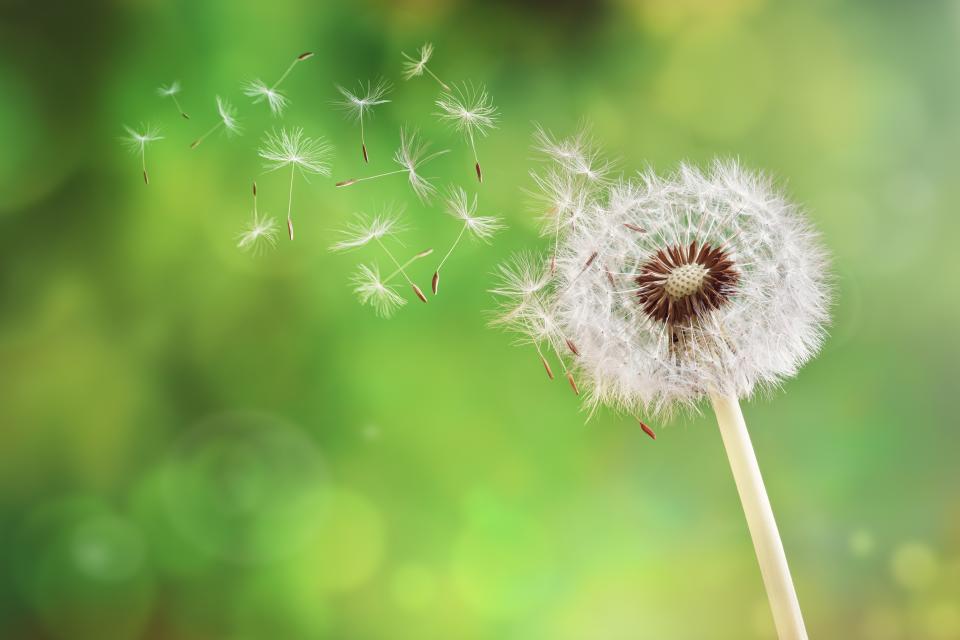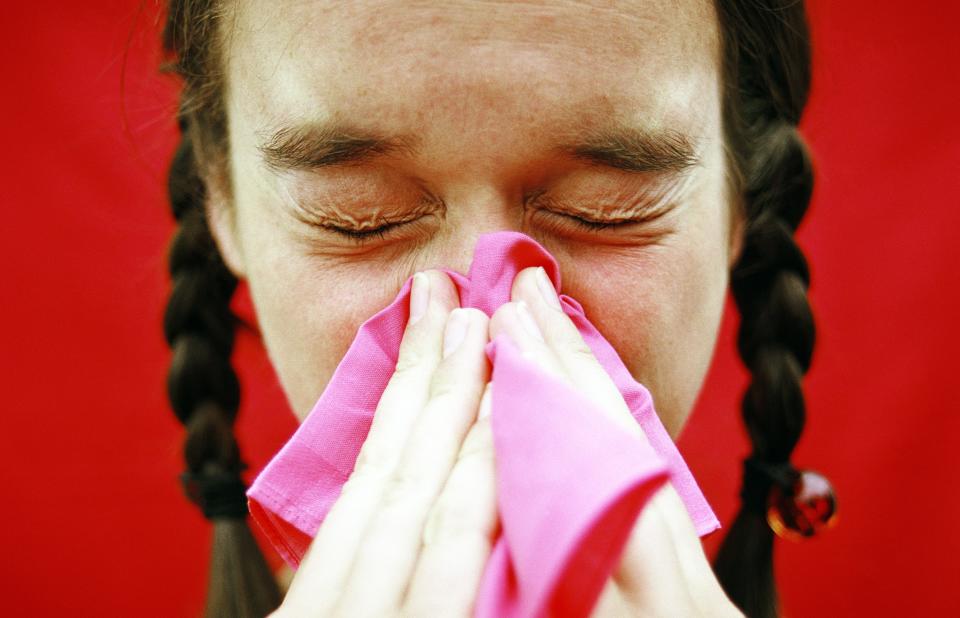How to Prevent the 2018 Allergy Season From Getting the Best of You
As February drags on, many of us find ourselves at the point where we would give almost anything for a time machine that can catapult us into spring, when we can finally put away our bulky jackets, we won’t have to worry about every flight being cancelled due to snow or ice, and this year’s dangerous flu season finally starts to wind down. “Everything will be better in spring,” we wistfully tell ourselves, conveniently forgetting that the warming temperatures are the bearers of another big annoyance: allergies.
According to the Centers for Disease Control and Prevention (CDC), more than 50 million Americans suffer from allergies every year. Those allergies, also known as hay fever or allergic rhinitis, can cause all sorts of pesky symptoms, like itching, sneezing, sinus pain, and more. As we inch closer to spring, here’s what you should know about what the upcoming months mean for your allergies — and how to keep the downsides to a minimum in 2018.
When is “peak” allergy season?
We throw around the term “allergy season” a lot, but the reality is there isn’t one season when everyone’s allergies collectively flare up. “‘Peak’ allergy season varies for each individual depending on what they may be allergic to and the region of the country they live in,” Sindhura Bandi, an allergist and immunologist at Rush University Medical Center tells Allure.
Seasonal allergies generally hit in waves. Bandi explains that tree pollen season usually goes from late February/early March through May; followed by grass season, which holds on until July; then August and the fall bring about mold spores (which take their toll in humid climates) and ragweed, which holds on until approximately November.
That said, none of that is an exact science. “In areas that do not experience frosty conditions, certain allergens may persist for longer seasons,” Bandi says. “In addition, with the more temperate climates we have been seeing nationally, certain pollen seasons are lasting for longer than usual.” And as if that weren't enough, there are also perennial allergens that persist year-round, such as dust, pet dander, and some types of mold.
What’s the difference between seasonal and perennial allergies?
Darria Long Gillespie, a clinical assistant professor at the University of Tennessee College of Medicine and head of clinical strategy at Sharecare, explains that seasonal allergies are only present during peak pollination times of specific allergens (like the aforementioned trees, grass, mold, and ragweed). Perennial allergies are not only present all the time, but they’re also caused by different allergens, with the exception of mold, which can cause both seasonal and perennial allergies. Instead of plants, Long Gillespie says that year-round allergies are typically triggered by insects (like dust mites and cockroaches) and animals (cats and dogs).
But that's where the differences stop. “Whatever the trigger of the allergy, the body’s response is the same,” Long Gillespie says. “It recognizes these things as something ‘harmful’ and mounts an immune response, which leads to the classic allergy symptoms, [like] stuffy/runny nose and sneezing, sore or itchy throat, and itchy/red eyes.”
How can I prevent or minimize both kinds of allergy symptoms?
The CDC explains that you can’t prevent allergies, but you can prevent allergic reactions. Doing so requires you to take control of your environment and minimizing those triggers as best you can.
If you have seasonal allergies, keep tabs on the daily pollen count, which you can get from most weather forecasting service. When it’s high, try to stay inside as much as you can. Both Bandi and Long Gillespie also recommend keeping your windows and doors (to your home and car) closed to minimize your exposure to pollen.
Of course, it’s unlikely that you can avoid going outside at all during peak pollination times, but there are still things you can do to help prevent reactions when you do. “When you come in from the outdoors, change your clothes and take a shower to rinse pollen out of your hair and off your skin,” Long Gillespie says. If you can’t shower right away, she recommends at least doing so before you go to bed. And if you have pets, wipe them down after they come inside, too.

Dandelion clock dispersing seed
Speaking of pets, a HEPA filter, as well as regular vacuuming, can also help ward against pet dander. It’s also worth noting that, Bandi says, cat dander can linger in a home up to six months. In the event that you used to have a cat — or have simply done a bit of cat-sitting, for that matter — and are still experiencing allergy symptoms, you may need to do a deep clean and replace your filters.
If possible, Long Gillespie suggests keeping the carpeting in your home to a minimum, as it attracts both pollen and dust. And if dust is your big allergy trigger, Bandi recommends keeping your home’s humidity below 50 percent (you can test the level with a hygrometer) and using dust mite-proof pillows and mattress covers. “In addition, frequent vacuuming and using a high-efficiency particulate air (HEPA) filter in the home can reduce dust mite exposure,” Bandi says.
Long Gillespie also says that nasal rinses, such as neti pots, can clear pollen out of your nose before the allergy symptoms start. If you go that route, be sure to closely follow the FDA's safety recommendations. Whatever your specific trigger, Long Gillespie also recommends cleaning all air, duct, and air conditioner filters before allergy season begins each year.
How can I fight them once they show up?
“Of course, prevent[ing] complete exposure is often not possible, and your allergist can recommend various medical therapies to reduce the symptoms,” Bandi says. “Allergen immunotherapy, or allergy shots, can be helpful in desensitizing your body to the allergens in which you are allergic.”
Long Gillespie also recommends options like antihistamines (which come in many forms to block your body’s immune overreaction to the trigger, steroid nose sprays to fight congestion and post-nasal drip, and decongestants in oral or nasal spray form.
If you’re not sure what exactly is causing your symptoms, Bandi suggests making an appointment with an allergist who can help you identify the trigger. And even if you do have a good idea of what allergen is causing you to sniffle and sneeze, a specialist can guide you on the best path for warding off and treating the symptoms, so you can get back to enjoying the season.
More stories on staying healthy:
Now, learn about the last 100 years of black hair history:


